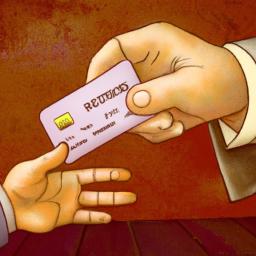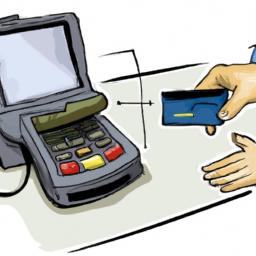Can You Pay Payroll with a Credit Card?
Introduction

When it comes to managing payroll, businesses are always on the lookout for convenient and efficient methods. One such option that has gained popularity is paying payroll with a credit card. In this article, we will explore the importance of payroll management and delve into the world of credit card payments for payroll.
Importance of Payroll Management
Payroll management is a critical aspect of running a business smoothly. It involves keeping track of employee wages, salaries, bonuses, and deductions. Accurate and timely payroll processing ensures employee satisfaction, compliance with legal regulations, and overall financial stability for the company.
Introduction to Credit Card Payments for Payroll
Traditionally, businesses have relied on methods such as direct deposits, checks, or cash to pay their employees. However, credit card payments for payroll offer a modern alternative that brings several benefits to the table. Paying payroll with a credit card involves using a business credit card to cover employee wages and related expenses.
Embracing the use of credit cards for payroll can revolutionize the way businesses manage their finances. From increased cash flow management to simplified payment processes, credit card payments offer a range of advantages. But before we delve deeper into the benefits, let’s explore the concept of payroll expenses and traditional payment methods.
Stay tuned for our next section, where we will explore the components of payroll expenses and traditional payment methods.
Understanding Payroll Expenses

Payroll expenses are the financial obligations a company incurs when compensating its employees for their work. To gain a comprehensive understanding of payroll expenses, let’s explore their definition and components.
A. Definition and Components of Payroll Expenses
Payroll expenses encompass various elements, including employee salaries, wages, bonuses, commissions, and benefits. Additionally, payroll expenses may include employer contributions to retirement plans, healthcare insurance, and payroll taxes. These expenses are crucial for accurately reflecting the cost of labor and ensuring proper financial management.
When calculating payroll expenses, it is vital to consider both direct and indirect costs associated with employee compensation. Direct costs are easily identifiable and typically include base wages and overtime pay. Indirect costs, on the other hand, encompass expenses like payroll taxes, employee benefits, and insurance contributions.
B. Traditional Methods of Paying Payroll
In the past, businesses predominantly relied on traditional methods to pay their employees. These methods include cash, checks, and direct deposits.
-
Cash: Paying employees in cash was once a common practice, especially for small businesses. However, this method poses challenges such as security risks, lack of transparency, and difficulties in record-keeping.
-
Checks: Paper checks were a widely used method for paying employees. While checks offer a more traceable payment method, they can be time-consuming to process, require physical distribution, and may incur additional expenses for printing and postage.
-
Direct Deposits: Direct deposits involve transferring funds electronically from the employer’s bank account to the employees’ accounts. This method offers convenience, efficiency, and reduced paperwork. However, it requires employees to have bank accounts, and employers must handle sensitive banking information.
With the advent of technology and the rise of credit card usage, businesses now have an alternative method that can streamline their payroll processes. In the next section, we will explore the benefits of paying payroll with a credit card. Stay tuned!
Benefits of Paying Payroll with a Credit Card

Paying payroll with a credit card offers numerous advantages that can benefit both employers and employees. Let’s explore some of the key benefits below:
Increased Cash Flow Management
By utilizing a credit card for payroll payments, businesses can effectively manage their cash flow. Instead of immediately depleting their bank account to cover payroll expenses, companies can take advantage of the interest-free grace period provided by credit card companies. This allows them to hold onto their cash for longer and invest it in more critical areas of their business operations.
Earn Rewards and Cashback
One attractive perk of paying payroll with a credit card is the opportunity to earn rewards and cashback. Many credit card issuers offer enticing reward programs where businesses can earn points, miles, or cashback on their payroll expenses. These rewards can be redeemed for various benefits such as travel, gift cards, or even statement credits, providing an extra incentive for businesses to adopt credit card payments for payroll.
Streamlined Expense Tracking
Credit card payments simplify expense tracking for both employers and employees. Rather than sifting through stacks of receipts or manually reconciling payments, credit card statements provide a clear and concise record of all payroll-related transactions. This streamlines the accounting process, saving time and effort for the finance department and ensuring accurate record-keeping.
Simplified Payment Process
Using a credit card for payroll payments simplifies the payment process for employers. Rather than managing multiple payment methods, such as writing checks or initiating direct deposits, employers can consolidate all payroll expenses onto a single credit card. This eliminates the need for complicated reconciliations and reduces the likelihood of errors in payment processing.
In the next section, we will discuss some considerations and limitations associated with paying payroll with a credit card. Stay tuned!
Considerations and Limitations
As with any financial decision, there are important considerations and limitations when it comes to paying payroll with a credit card. Let’s explore some key points to keep in mind before opting for this payment method.
Credit Card Acceptance by Employers
Before implementing credit card payments for payroll, it’s crucial to check if your employer accepts this method. While more businesses are embracing the convenience of credit card payments, not all employers may have the infrastructure in place to accommodate this option. It’s essential to have open communication with your employer to understand their payment preferences and ensure that they are willing to accept credit card payments for payroll.
Additional Fees and Interest Rates
One factor to consider when paying payroll with a credit card is the potential for additional fees and interest rates. Some credit card issuers may charge transaction fees or impose higher interest rates for cash advances or large payments. It’s important to carefully review the terms and conditions of your credit card agreement to understand any associated costs. Calculating these fees and interest rates will help you determine if the convenience of credit card payments outweighs the potential financial implications.
Employee Privacy and Security Concerns
Employee privacy and security should always be a top priority. Paying payroll with a credit card may require sharing sensitive employee information, such as social security numbers or bank account details, with the credit card issuer. It’s crucial to ensure that proper security measures are in place to protect this information from unauthorized access or potential breaches. Before proceeding with credit card payments for payroll, consult with your credit card provider to understand their data protection protocols and ensure compliance with relevant privacy regulations.
Continue reading to discover the step-by-step process of paying payroll with a credit card in our next section.
Steps to Paying Payroll with a Credit Card
Paying payroll with a credit card can bring numerous benefits to businesses. To successfully implement this payment method, it is crucial to follow a few essential steps. Let’s explore the process of paying payroll with a credit card in detail.
A. Choosing the Right Credit Card
The first step in paying payroll with a credit card is selecting the right card for your business. Look for a business credit card that offers suitable features and benefits. Consider factors such as credit limit, interest rates, rewards programs, and any additional fees associated with the card. Conduct thorough research to find a credit card that aligns with your business needs.
B. Confirming Employer Acceptance
Before proceeding with credit card payments for payroll, it is essential to confirm whether your employer accepts this payment method. Some employers may have specific policies or restrictions in place. Reach out to the relevant department or human resources to ensure that paying payroll with a credit card is an accepted method in your organization.
C. Ensuring Sufficient Credit Limit
To pay payroll with a credit card, it is crucial to have a sufficient credit limit on the card. Calculate the total amount required for payroll expenses, including taxes and any additional costs. Ensure that your credit card has a limit that accommodates the payroll amount. If necessary, consider requesting a credit limit increase from your credit card issuer.
D. Setting Up Payroll Payments
Once you have chosen the right credit card, confirmed employer acceptance, and ensured a sufficient credit limit, it’s time to set up payroll payments. Work with your payroll provider or accounting department to establish the necessary processes for making payments with a credit card. This may involve providing the credit card details, setting up recurring payments, or integrating the credit card payment method into existing payroll systems.
E. Monitoring and Managing Credit Card Payments
After successfully setting up credit card payments for payroll, it is crucial to monitor and manage these transactions effectively. Keep track of all payroll-related expenses charged to the credit card. Regularly review your credit card statements and reconcile them with payroll records. This practice ensures accurate financial reporting and helps identify any discrepancies or potential issues.
Stay tuned for our next section, where we will explore the considerations and limitations associated with paying payroll with a credit card.
Conclusion
In conclusion, the option to pay payroll with a credit card presents businesses with a modern and convenient solution for managing employee wages and related expenses. The importance of effective payroll management cannot be overstated, as it ensures employee satisfaction, legal compliance, and financial stability.
With credit card payments for payroll, businesses can enjoy numerous benefits. It allows for better cash flow management, as employers can delay the outflow of funds by utilizing the credit period offered by credit cards. Additionally, businesses can earn rewards and cashback on their credit card transactions, further enhancing their financial position.
Furthermore, credit card payments streamline expense tracking, making it easier for businesses to monitor and categorize payroll-related expenses. This not only saves time but also simplifies the process of financial reporting and budgeting.
However, it is crucial to consider certain limitations and factors before opting to pay payroll with a credit card. Employers must ensure that their chosen credit card is accepted by their employees, and they should be aware of any additional fees and interest rates associated with credit card transactions. Employee privacy and security concerns also need to be addressed to maintain trust and confidentiality.
To make an informed decision about paying payroll with a credit card, businesses should follow a few important steps. This includes choosing the right credit card, confirming employer acceptance, ensuring a sufficient credit limit, setting up payroll payments, and effectively monitoring and managing credit card transactions.
In conclusion, credit card payments for payroll can streamline and enhance payroll management processes. However, businesses must carefully weigh the benefits and considerations before implementing this payment method. By doing so, they can make the best decision for their financial well-being and ensure a smooth payroll experience for both employers and employees.
Remember, for more insightful articles and valuable information on payroll management and other business topics, visit kizi5.top.
Conclusion: So above is the Can You Pay Payroll with a Credit Card? article. Hopefully with this article you can help you in life, always follow and read our good articles on the website: kizi5.top

